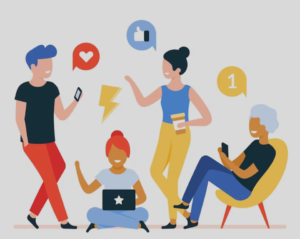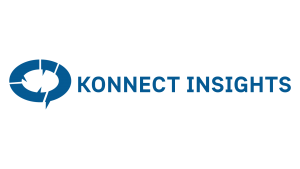Social listening for crisis management is a valuable tool that can assist organizations in detecting and preventing crises, engaging with stakeholders, evaluating performance and reputation, effectively responding to crises, and gaining market insights and competitive intelligence.
We can identify emerging issues, complaints, risks, and opportunities by tracking relevant keywords, hashtags, mentions, sentiments, and trends. This allows us to proactively address potential problems before they escalate into full-blown crises and provide timely and effective responses when necessary.
We believe that social listening is essential to any crisis management strategy. However, we also recognize the challenges that organizations may face when implementing it. That’s why we aim to provide comprehensive guidance and support to help our clients successfully integrate social listening into their crisis management plans.
Through case studies and practical advice, we demonstrate the benefits of social listening for crisis management, including how it can help improve performance, reputation, and stakeholder engagement. In this whitepaper, we also provide step-by-step guidance on how to start and manage a social listening program for crisis management.
Watch out: 6 Social Listening Trends 2023 To Stay Ahead Of The Game
Benefits of Social Listening for Crisis Management
Social listening is a powerful tool for crisis management. By monitoring social media channels in real-time, companies can quickly detect and respond to potential crises before they escalate. In this section of the blog, we will explore the benefits of social listening for crisis management. We will discuss how social listening can help companies detect early warning signs of a potential crisis, understand the impact of a PR crisis, and take necessary and purposeful actions to protect and mend their brand’s reputation.
- Detect and Prevent Crises
By monitoring social media channels in real time, companies can quickly identify emerging issues, complaints, risks, or opportunities that could potentially lead to a crisis. Companies can also use social listening to monitor the reactions of their audience, influencers, media, and competitors. This can provide valuable insights into how others perceive the company and its actions. By anticipating customer needs and spotting red flags early on, companies can take proactive steps to prevent crises from occurring.
Deutsche Telekom is an example of a company that used social listening to detect and prevent a crisis. They developed a state-of-the-art crisis management system powered by real-time social listening, which helped them avert crisis situations that would have hit share prices and weakened sales.
- Communicate and Engage with Stakeholders
Social listening can also help companies communicate and engage with stakeholders during a crisis. By understanding the concerns, expectations, and emotions of stakeholders, companies can tailor their messages accordingly. Social listening can also help companies identify and reach out to key influencers, advocates, or critics.
Southwest Airlines is an example of a company that used social listening to communicate and engage with stakeholders during a crisis. When Flight 345 landed nose-first at LaGuardia, the company responded quickly and communicated openly and honestly on Facebook and Twitter, which helped them control the story and maintain good faith with their customers.
- Evaluate and Improve Performance and Reputation
Social listening can also help companies evaluate and improve their performance and reputation after a crisis. By measuring the volume, sentiment, reach, and impact of online conversations about their brand and the crisis, companies can assess how well the situation was handled. Social listening can also help companies track the recovery and restoration of their brand image.
For example, United Airlines used social listening to evaluate and improve its performance and reputation after a crisis. After a passenger was forcibly removed from an overbooked flight, the company used social listening to track the volume, sentiment, reach, and impact of online conversations about their brand and the crisis. This helped them assess how well the situation was handled and track the recovery and restoration of their brand image.
- Crisis Response and Management
Social listening is an essential tool for crisis response and management. By detecting potential crises early on and communicating effectively with stakeholders, companies can protect their brand’s reputation and maintain customer trust.
An example of a company that uses social listening for crisis response and management is Nestle. When Greenpeace launched a campaign against Nestle’s use of palm oil from unsustainable sources, the company used social listening to monitor online conversations about the issue. This helped them respond quickly and effectively to the crisis.
- Competitive Intelligence and Market Insights
In addition to its benefits for crisis management, social listening can also provide valuable competitive intelligence and market insights. By monitoring conversations about their competitors and industry trends, companies can gain a better understanding of their market position and make informed decisions.
For example, Coca-Cola utilized social listening for competitive intelligence and market insights. The company uses social listening to monitor conversations about its competitors and industry trends. This helps them gain a better understanding of their market position and make informed decisions.
Read more about: 20 Benefits of Using Social Listening Tools for Your Business
Challenges of Social Listening for Crisis Management
While social listening is a powerful crisis management tool, it has its challenges. In this section, we will explore some of the common challenges that companies face when using social listening for crisis management.
- The volume of data: One of the biggest challenges of social listening is the sheer volume of data that needs to be monitored and analyzed. With millions of social media posts being published every day, it can be difficult for companies to keep up with the constant stream of information.
- Identifying relevant information: Another challenge of social listening is identifying relevant information. With so much data available, it can be difficult for companies to determine which conversations are relevant to their brand and which ones can be safely ignored.
- Responding in real-time: In a crisis situation, time is of the essence. Companies need to be able to respond quickly and effectively to potential crises. However, this can be challenging when using social listening, as it takes time to monitor and analyze the data.
- Maintaining a consistent brand voice: When responding to a crisis, it is important for companies to maintain a consistent brand voice. However, this can be challenging when using social listening, as different team members may be responsible for monitoring and responding to different social media channels.
Despite these challenges, social listening remains a powerful tool for crisis management. By implementing best practices and using the right tools, companies can overcome these challenges and effectively use social listening to manage crises and protect their brand’s reputation.
Case Studies of Companies That Successfully Used Social Listening for Crisis Management
In this section, we will delve into real-life examples of companies that have successfully implemented social listening for crisis management. These case studies will provide insight into how social listening can be used to avert potentially damaging situations, engage with stakeholders, and improve reputation and performance. By examining the experiences of these companies, we can gain a better understanding of the benefits and challenges of social listening.
- Nike:
During a highly-anticipated game, Duke University’s star player Zion Williamson suffered a knee injury when a Nike shoe malfunctioned, leading to a 1.8% drop in Nike’s stock. Nike promptly released a statement expressing concern, promising to investigate the issue.
They sent a team to Durham, North Carolina, and visited their manufacturing site in China, returning with valuable suggestions. Williamson returned to the court within a month with custom shoes, praising Nike for their quality.
Nike’s swift response, open communication, and proactive approach to addressing the issue through social listening played a crucial role in managing the crisis effectively. By demonstrating their commitment to athlete safety and taking immediate action to rectify the situation, Nike regained trust and maintained a positive brand image.
- Deutsche Telekom:
Deutsche Telekom, one of the world’s leading telecommunications companies, utilized Talkwalker’s social data intelligence to create a situation room for crisis management. The state-of-the-art crisis management system was powered by real-time social listening and allowed the company to avert potential crisis situations that could have negatively impacted share prices and sales.
With this solution, Deutsche Telekom was able to effectively avert potentially damaging issues from spiraling out of control, strengthen its crisis management system, and improve its overall reputation.
- Southwest Airlines:
After the incident where Southwest Flight 345 landed nose first at LaGuardia, Southwest Airlines leveraged social media listening for crisis management. The company quickly responded and communicated transparently on Facebook and Twitter, which aided them in managing the narrative and maintaining customer trust.
They acknowledged the flight cancellations and delays and offered frequent updates on the situation, while CEO Gary Kelly informed CNBC that the company aimed to restore normal services by Wednesday. The company’s effective use of social media listening allowed them to mitigate the crisis and limit potential damage to their reputation.
Getting Started with Social Listening for Crisis Management
Steps for Implementing a social listening program
- Define your goals: It is crucial for a company to clearly define what they want to achieve with social listening. Are they looking to detect early warning signs of a potential crisis, understand the impact of a PR crisis, or take necessary actions to protect and mend their brand’s reputation?
- Choose the right tools: There are many social listening tools available on the market, each with its own strengths and weaknesses. A company should choose a tool that meets its needs and fits its budget.
- Set up alerts and notifications: A company should set up alerts and notifications so that they are immediately notified when there is a potential crisis.
- Monitor relevant keywords and hashtags: A company should monitor relevant keywords and hashtags related to its brand, industry, and competitors.
- Analyze the data: A company should use the data collected by its social listening tool to analyze trends, sentiments, and conversations.
Best practices for social listening for crisis management
- Respond quickly: The faster a company responds to a potential crisis, the better its chances of containing it.
- Be transparent: A company should be open and honest in its communications with customers and stakeholders.
- Monitor multiple channels: A company should monitor multiple social media channels to get a complete picture of the situation.
- Train your team: A company should make sure that its team is trained on how to use social listening tools and how to respond to potential crises.
Common pitfalls to avoid when using social listening for crisis management
- Ignoring negative feedback: A company should not ignore negative feedback. Instead, they should use it as an opportunity to improve.
- Overreacting: A company should not overreact to a potential crisis. They should take a measured approach and respond appropriately.
- Failing to follow up: A company should not forget to follow up after a crisis has been resolved. They should ensure that they have addressed all concerns and that the situation has been fully resolved.
Final Words
In conclusion, social listening can make a significant difference when it comes to managing crises effectively. It enables companies to stay on top of potential issues, respond swiftly, and protect their brand’s reputation. By implementing a social listening program and following best practices, businesses can proactively manage crises, gain insights into customer needs, and make data-driven decisions.
At Konnect Insights, we believe that social listening is essential to crisis management. It allows businesses to monitor conversations in real time and take proactive steps to mitigate potential risks before they turn into full-blown crises.
We are proud to offer an omnichannel customer experience management suite that empowers businesses to listen to what their customers are saying online, evaluate conversations, and analyze data to take data-driven action. Our platform integrates with over 3,000 software applications and offers a wide range of features and tools to help businesses of all sizes improve their customer relationships.
If you’re looking for a comprehensive solution for social listening and crisis management, we invite you to check out our website, Konnect Insights. Our platform is designed to help businesses effectively manage crises and protect their brand’s reputation through real-time monitoring, analysis, and response. Visit our website to learn more about how Konnect Insights can help your business with social listening for crisis management.












